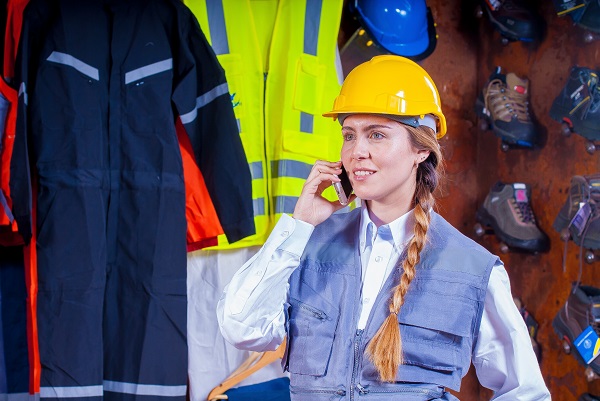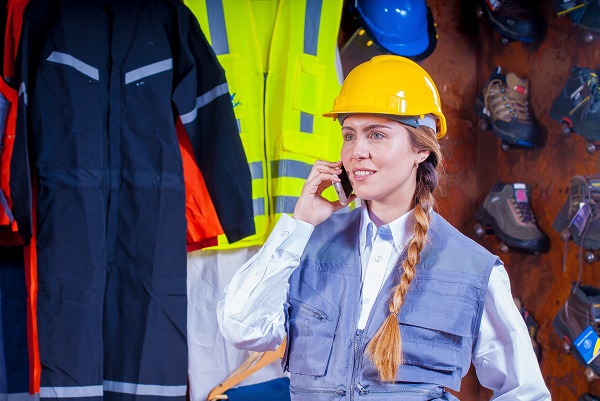
Providing your staff members with the correct workwear or PPE, can make a huge difference in their safety, general happiness and even their productivity. But when it comes to organising workwear, footwear is something that is often overlooked.
With around half of all UK employees – more than 11 million people – spending every single working day on their feet, comfortable footwear has never been more important. Long term periods spent standing, walking or working on your feet can lead to serious injuries or medical conditions.
Do I need to provide safety footwear to my employees?
As an employer, it’s part of your duty of care to your staff to provide them with a safe working environment. If, when carrying out your risk assessments, you do identify any potential risks which could cause injury or harm to your employers, specifically their feet, and this risk cannot be controlled in any other way, then safety footwear must be provided free of charge.
Let’s take a look at some of the benefits that providing safety footwear can have on your employees, as well as some of the risks it can protect them from.
Preventing Injuries
The number one reason for providing safety footwear in the workplace is to protect your team from injuries. Depending on your working environment, there’s a seemingly endless list of potential injuries that can occur in the workplace, including heavy items being dropped onto feet or staff stepping onto sharp objects which can puncture through normal shoes. But did you know that a quality pair of safety boots or shoes can also protect against electric shocks?
Improving Posture
Not only will the right pair of safety shoes protect you from injury, but they can also make a surprising amount of difference to your posture. Sound too good to be true? Let us explain exactly how! Well-fitting safety footwear will cushion and support the arch of the foot, which means that both your feet and ankles are fully supported – in turn, this ensures proper alignment of your leg, which will improve your overall posture. And of course, good posture can prevent and alleviate back pain.
Enhancing Comfort
Comfort really is key, especially when you’re going to be spending around 40% of your week wearing the same pair of shoes, but comfort can mean so much more than just feeling ‘comfortable’. Well-fitting footwear will prevent your employees from feeling fatigued too quickly, which in turn means they’ll be able to carry out their job more efficiently. Which is exactly why comfort should never be underrated!
Preventing Falls
The second most common accident caused from wearing the wrong footwear in the workplace has to be trips, slips or falls. Something that can quite easily be avoided by providing employees with safety footwear in the workplace, as most safety boots and shoes are designed with an anti-slip sole. Not only will you be able to rest easy knowing that your staff are working in a lower-risk environment, but you can also feel confident knowing there’ll be less accidents, and therefore less time spent away with injuries.
Prepared for All Weather
If your staff are required to work outside, then appropriate footwear is essential. In the right pair of safety boots, your staff will be prepared and ready for working in all types of weathers, whether that might be heavy downpours or freezing temperatures. Inappropriate footwear in cold temperatures can be quite dangerous, and can even lead to frostbite if your staff are exposed to low temps for a long period of time.
What level of safety footwear do my employees need?
Now you understand why safety footwear can be so beneficial for both your staff and your business. But before you start looking for the right brand or shoe, we want to leave you with some useful information to help you on your search.
If you’re stuck deciding between safety boots, shoes or even maybe trainers, then this helpful guide should help make that decision a little easier for you.
Once you know what sort of shoe to go for, next up you’ll need to decode the safety footwear standards. Safety footwear is categorised into different groups depending on the level of protection that is offered. Let’s take a quick look at four of the most common safety standards:
S1
- Features a protective toe cap (this can be either a steel toe or a more lightweight composite toe cap)
- Designed with a fully enclosed heel
- Has an anti static sole
S1P
- All the S1 features
- With a penetration resistant outsole
S2
- All the S1 features
- With a water resistant upper
S3
- All of the features of an S2 shoe
- With an anti-perforation sole
By assessing the main risks in your workplace, you should easily be able to match these up against these codes and decide which would be the best fit for your employees.
Remember, although it may seem like a big investment, providing your employees with the right workwear and PPE will save you money in the long run. You’ll have healthier, happier and more productive employees, who are able to efficiently carry out their roles without detriment to their long-term health and capabilities.
Image source: www.pexels.com
Looking For HR Management System?
Call Pursho @ 0731-6725516
Telegram Group One Must Follow :
For Startups: https://t.me/daily_business_reads







